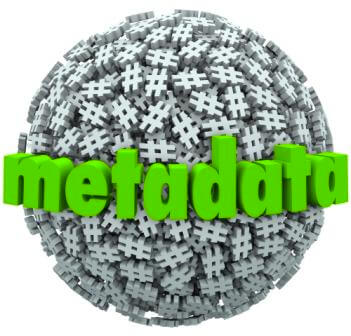 Metadata is structured, coded data that describes characteristics of objects-carriers of information and contributes to the identification, detection, evaluation, and management of these objects. In the simplest terms, metadata is data about data, information about information, or description of the content. Most often, metadata includes information describing the structures of the data used by the program, as well as the ways of its presentation, methods of its processing, access permissions, and other settings.
Metadata is structured, coded data that describes characteristics of objects-carriers of information and contributes to the identification, detection, evaluation, and management of these objects. In the simplest terms, metadata is data about data, information about information, or description of the content. Most often, metadata includes information describing the structures of the data used by the program, as well as the ways of its presentation, methods of its processing, access permissions, and other settings.
For example, most of the more or less high quality resources on the Internet are created on the basis of some content management system, which in turn forms the “content” of web pages based on certain information, extracting it, for example, from the database. This information is metadata in relation to the contents of the managed site, because it contains a list of pages, panels, menus, user profiles and other structural elements of the website.
Metadata can be used in three ways:
- Passive, by providing clear documentation of the structure, development process, and use of the data warehouse system. Available documentation is necessary for all participants (i.e., end users, system administrators, as well as application developers).
- Active, by storing specific semantic aspects (e.g., conversion rules) in the form of metadata that can be interpreted and used during performance. In this case, processes of data warehouses are managed by metadata. Active metadata and additional documentation are managed in the same repository, while the relevance of the documentation increases.
- Half-active, due to the storage of static information (e.g., definitions of structures, specifications of configurations), which will be picked up by another program component at run time.
Website Usage
Managed metadata is a hierarchical collection of managed data that you can define and use as element attributes in SharePoint. Using managed metadata on the website of the organization provides a number of advantages.
Firstly, with managed metadata features in SharePoint, you can vary the degree of control of the metadata that is added to the content. Managed metadata simplifies the consistent use of terms and keywords. Terms can be defined in advance and only authorized users will be allowed to add new terms. You can also prevent users from adding their own corporate keywords to the elements and making them use the existing ones. Managed metadata also provides higher accuracy by providing a list of valid terms from which users can select the desired values. Since corporate keywords are also a type of managed metadata, they will also be more consistent.
In addition, SharePoint products provide the flexibility of customization. You can choose to what extent and volume the metadata structuring and management will be performed.
Another advantage is the improved content detection. When consistent metadata is used for the website content, it is much easier to access business information and data using the search function. New search functions allow users to filter the results on the ground of metadata.
Now you can see that there is a myriad of pros of using metadata as it can be applied in a wide range of functions.
Galist Technology provides with topnotch IT Consulting services in Kansas – contact us for more information!

